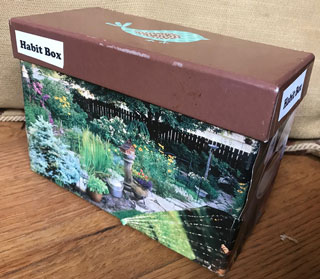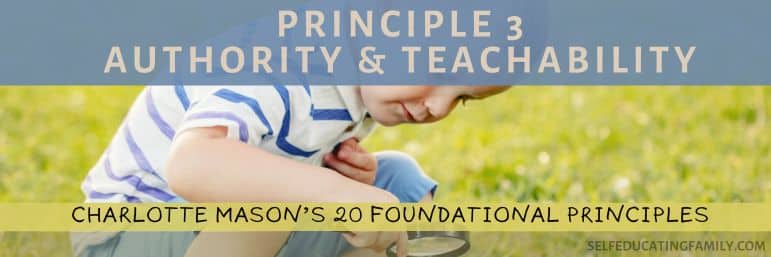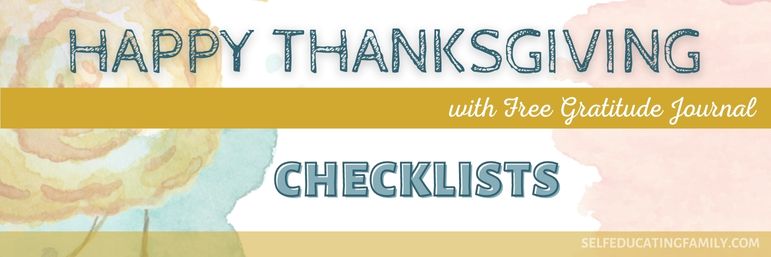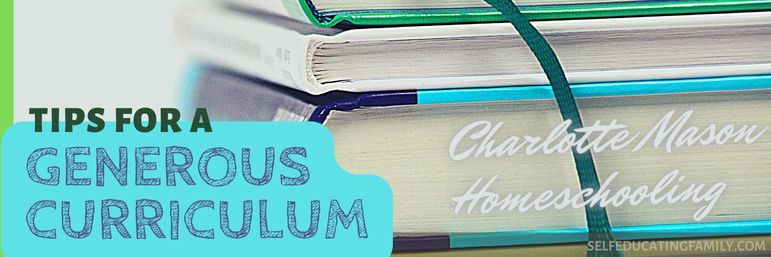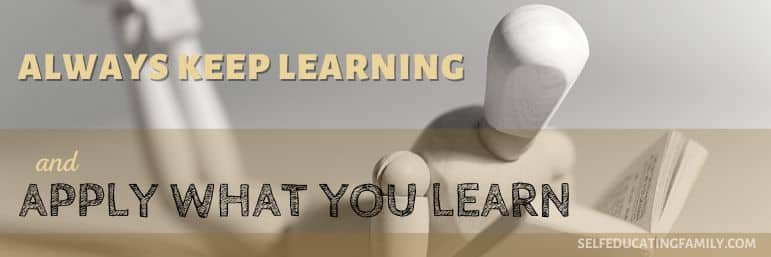What’s inside: Did you know a small “habit box” can help you with habit training for young children? When you make forming good habits a part of your homeschool routine, it can make the days go easier. This post shows how to use a habit box to learn new habits. Over time, you will collect a set of cards showing characteristics of the habits you have learned.
What is a Habit Box?
A number of years ago, our family started a “habit box” in order to learn useful habits. The box is simply a pretty box, like a recipe card holder, which contains a set of index cards each summarizing the characteristics of a good habit. By adding one new habit every few months or every semester, you can build a large collection of good habits.
A simple example of a good habit for very young children to try is one of the classic physical good habits –like “cleanliness” – you could focus on just getting them to brush their teeth properly and unprompted. Here’s a snapshot of our Cleanliness index card that includes “Grooms self”. You can see where I added in “including nails and hair,” so I must have thought my boys were doing a good job on the teeth brushing habit by the time we started the habit box.
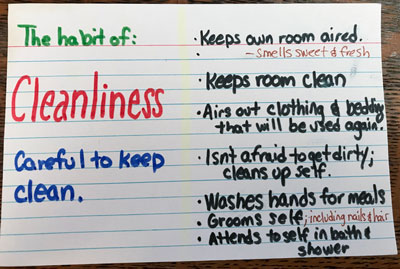
A note on my Cleanliness card in my habit box: The specific items that I list which describe “cleanliness” to me, I copied from a book which I own called “Laying Down the Rails” by Sonya Shafer at Simply Charlotte Mason. In this book, Sonya has organized Charlotte Mason’s thoughts on habit training into easy to navigate topical lists. It’s an excellent reference and is what impelled me to make a habit box in the first place. That book combined with the idea of a rotational memory box system (which is also described on her site) morphed into the concept of a Habit box.
Why you should try a Habit Box
Here’s some reasons to try a box:
- A physical reminder, like a box, can help your remember to work on your new habit.
- This tool is a great habit in itself – the box helps you learn the habit of learning new habits.
- It can inspire family learning if it is a shared box, especially with habits that involve how you treat other people, like kindness or courtesy.
- A habit box can make learning new things a little fun – especially if you are trying to replace a bad habit, like learning patience instead of interrupting people, for instance.
- Making the cards themselves can be a learning tool if you are a hands-on or visual learner.
- Adding habits to a collection can be enjoyable to see how many habits you have acquired over the years.
How to make a habit box
- Get a Box
- Just something to hold index cards.
- Personalize your box
- You want ownership. Make it cute or pretty if you like that. If you’re crafty, decoupage or paint it. Put photos on the outside. I made a collage on a really ugly index card box that I found in the super-clearance area at an office supply store. Even now after years, it is still prettier than when it started – and it is pretty beat up at this point! Anything you can do to make it so that you use it will be good.
- Put cards in box
- Fill the box with index cards as you add each new habit.
That’s it. It’s not brain science. Keep it simple.
When to Start a Habit Box?
Now.
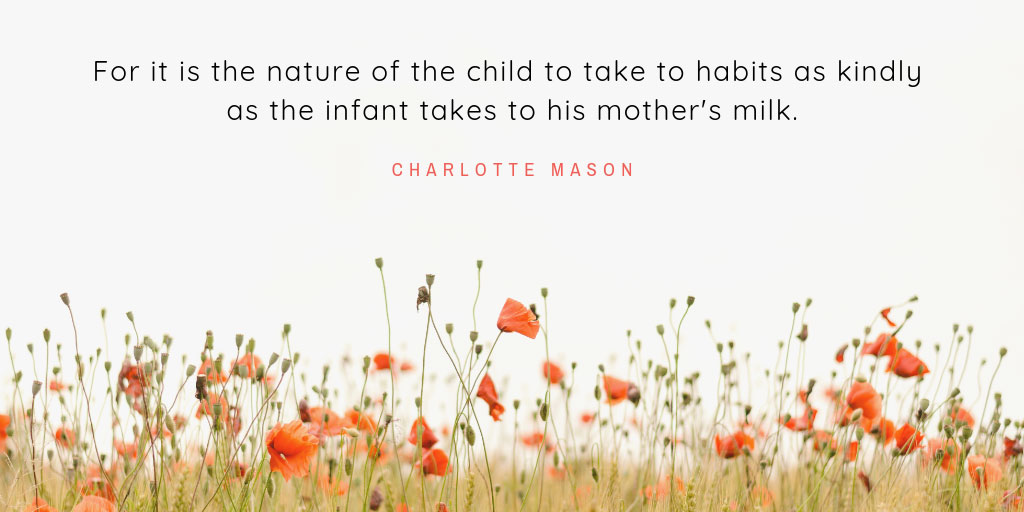
Never too early, never too late.
- If you have small children, definitely start now.
- If you have mid-sized children, start now.
- If you have full-sized children, start now.
- If you don’t have children or just want to work on creating better habits for yourself, why not start now?
Why are Habits so Important to Character Development?
Many people in the past have thought that the automation of habits contributes directly to who we become as people.
According to an article from Brain Pickings, the American writer, historian, and philosopher, Will Durant, summarized Aristotle as, “We are what we repeatedly do.” The article also cites American psychologist William James as saying, “Could the young but realize how soon they will become mere walking bundles of habits, they would give more heed to their conduct while in the plastic state.”
Fortunately, according to today’s advances in brain science, cognitive scientists understand that the brain has a certain elasticity that does allow new pathways to form even at older ages – which I only mention to sway you to start today on learning new habits no matter how old you or your children are. Interestingly, Charlotte Mason knew that ahead of the science of her time.
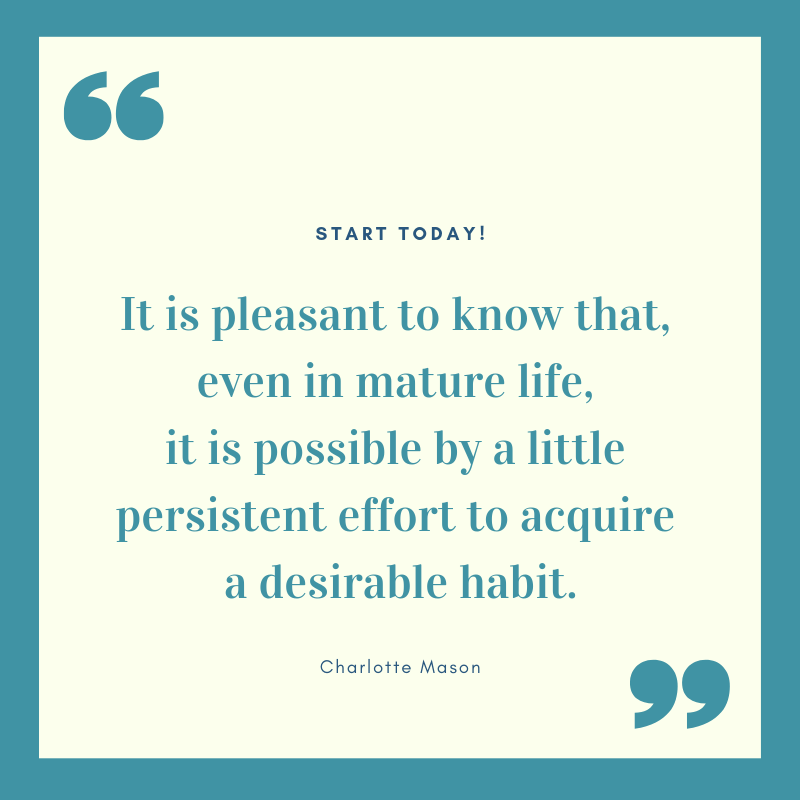
So, the easy-to-start-with part-physical habits – like cleanliness, neatness and order – are great, but working on what I call “advanced” habits of the mind – mental habits like attention, observation, mental effort or self-control— can make a young child’s learning career easier and can make a more mature person’s self-directed learning automatic.
And a habit box can be a useful ritual to help with the task of learning a new habit.
How to Use a Habit Box
Select a habit to work on for a few months, perhaps a term or semester or season. Three months is a good amount of time to firmly establish a habit while continuing to maintain other habits.
Side note:
I have no science for this “3 month” figure. If you want to do a quick search on habit forming, the research suggests a variety of answers. Dr. Maxwell Maltz, in his book Psycho-Cybernetics in 1960, noted his observations of his plastic surgery patients who took about 21 days to get used to their new face or adjust to a missing limb. The 21 day figure was seized upon and popularized by self-help gurus since then, leading to the common belief that 21 days was THE number to shoot for. However, in a 2009 study conducted by Phillippa Lally and published in the European Journal of Social Psychology, new habits can take anywhere from 18 to 254 days to form. The science of habits a very interesting area to look into and maybe learn more about.
Put another interesting topic on the list of things to learn!
How to select a new habit
There are lots of great lists out there. I personally always picked something we were lacking. My early habits to practice were: attention, order, kindness (remember, I had three small boys at the time!). Attention is a great one that everyone needs – we revisited it several times over the years.
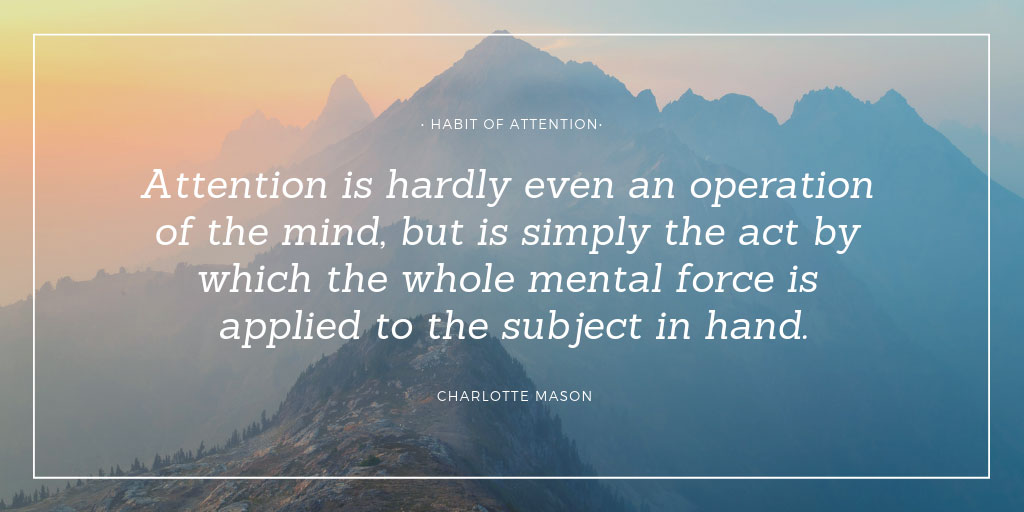
Besides the fabulous book Laying Down the Rails, which I mentioned earlier, Charlotte Mason’s recommendations on habits can be found throughout the complete Charlotte Mason Series, but I will warn you that they apparently didn’t believe in bullet lists in the 1890’s.
After selecting a habit to work on
Once you have your habit, take out a blank index card and write it at the top of the card. Write down the important things you want to remember that pinpoint exactly the behavior or characteristics you are trying habitualize.
Put the card in the box.
Next day, take out the card and read it. If you are doing this with children or with a buddy, read it together.
Next day, re-read it. In a matter of a week or so, you’ll have it memorized. Over these days, you should look for behaviors that match the habit. Also begin to look for the characteristics of the habit in whatever you are reading. For instance, you might discuss how Atticus Finch teaches reasoning to Scout in To Kill a Mockingbird if you happen to be studying the habit of thinking. If you are working on the habit with someone else, notice when they demonstrate the habit – if you are working on kindness and one of your kids is nice to a younger sibling, definitely make sure you notice it. Each day, start a conversation about whatever habit you are working on.
The card in the habit box is a trigger to remember, think about, and act out the characteristic that you are trying to establish.
Once you have multiple cards in your box, be sure to review older cards.
Here’s a sample schedule:
- New Card: Every day for 3 months
- Last card you learned: Once a week for 3 months
- Card learned 6 months ago: Once every fortnight (a.k.a. every other week)
- Card learned 9 months ago: Once a month
- Cards over a year old: Use periodically as needed. At least annually or maybe once every time you add a new card.
When you take a card out, you can play a thematically related game once in a while. Or have a question and answer session. For instance, “Did you practice your new habit yesterday? Tell me about it.”
Go out and make a habit
That’s it. Now you need to start a new habit. Choose one. Even reading books can be a good habit to learn. Start small. Just keep going after that. You can do it!

